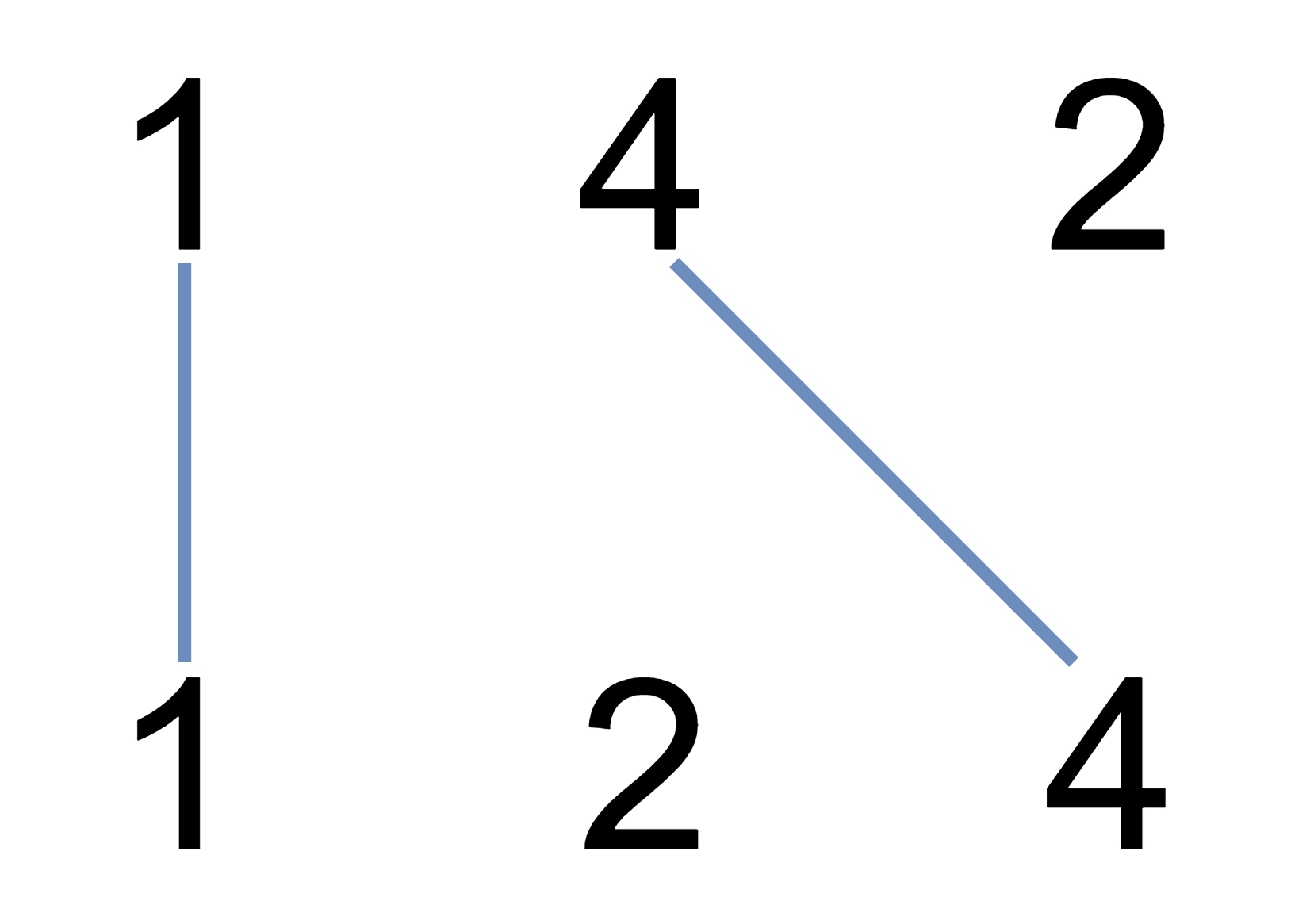1035. Uncrossed Lines
LeetCode 1035. Uncrossed Lines
Description
We write the integers of A and B (in the order they are given) on two separate horizontal lines.
Now, we may draw connecting lines : a straight line connecting two numbers A[i] and B[j] such that:
A[i] == B[j];The line we draw does not intersect any other connecting (non-horizontal) line.
Note that a connecting lines cannot intersect even at the endpoints: each number can only belong to one connecting line.
Return the maximum number of connecting lines we can draw in this way.
Example 1:

Example 2:
Note:
1 <= A.length <= 5001 <= B.length <= 5001 <= A[i], B[i] <= 2000
Tags
Dynamic Programming, Array
Solution
This problem is totally the same as LeetCode 1143. Longest Common Subsequence.
Complexity
Time complexity:
Space complexity:
Code
Reference
Last updated
Was this helpful?